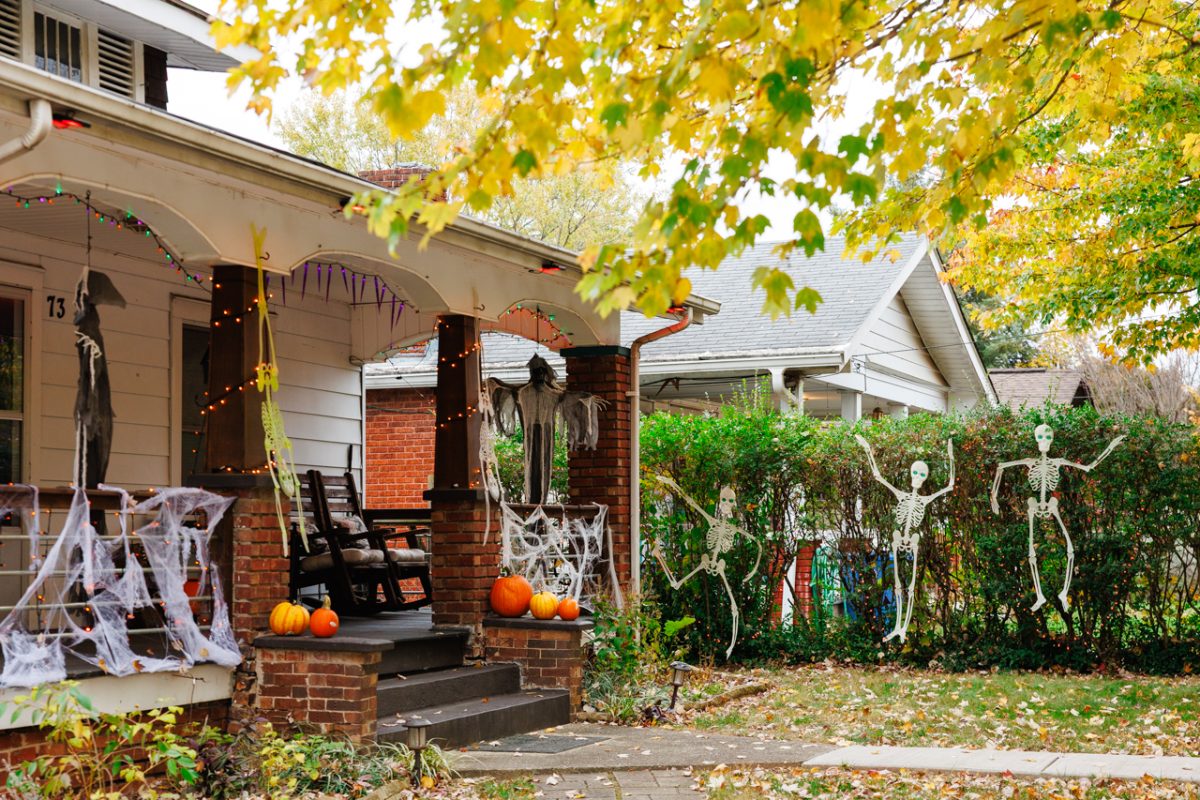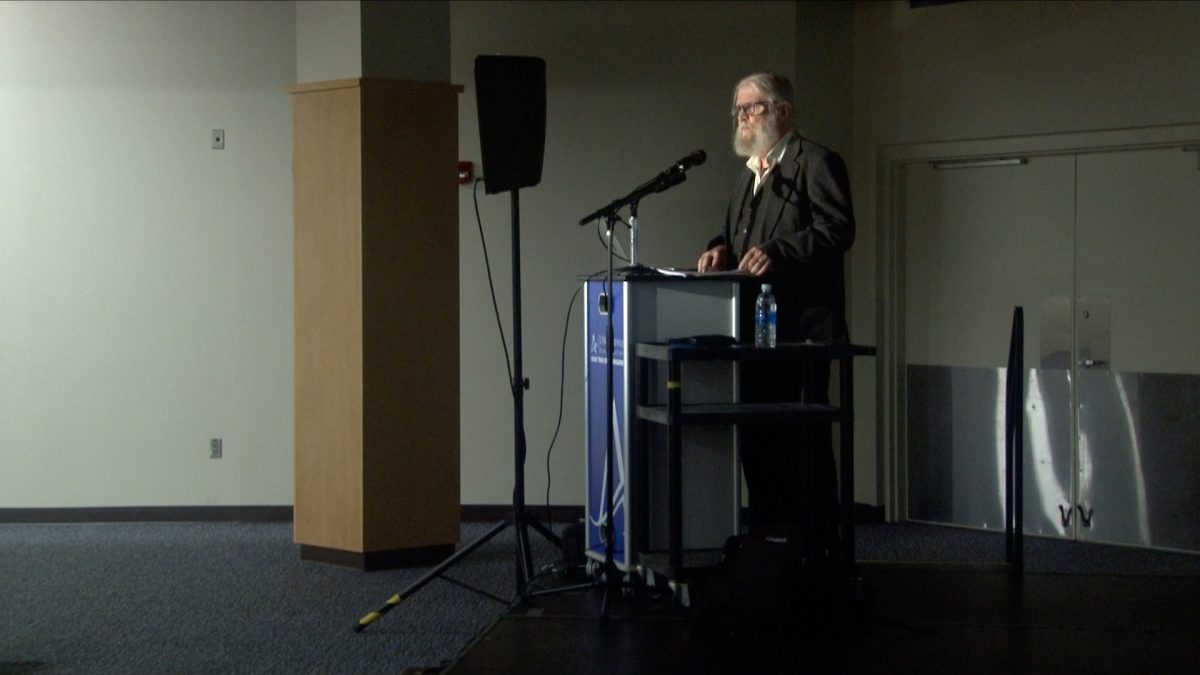Austin Campbell
News Writer

Photo of Prashant Patel discussing where the fire was lit.
Since the beginning of the COVID-19 pandemic, the Asheville Fire Department said Buncombe County started experiencing an increase in fire-related crimes.
“It is important to understand what arson is. Arson is a broad term used to describe a crime related to a fire. By state statute: arson is the deliberate burning of one’s dwelling. Asheville Fire Department and Asheville Police Department investigators have seen a slight increase in these types of fires since the pandemic, but we have seen an increase in accidental fires during this time as well,” said Kelley Klope, public information officer for the AFD.
Klope said the type of fires the public commonly refers to as arson are incendiary fires. A fire intentionally set where or when there should not be a fire.
“Asheville Fire Department has investigated an average of 15 incendiary fires per year since 2016. In 2020, we investigated 25 fires determined to be incendiary.However, in that same time frame, we have investigated an average of 36 fires per year that were accidental in nature. In 2020 we investigated 47 accidental fires,” Klope said.
Since February, the AFD saw more than one incident, but Klope said they do not warrant concern about serial arson since they are unrelated incidents.
“The best way to prevent arson is to know your surroundings and follow crime prevention techniques. Having security cameras, fences, alarm systems. Secure vacant homes and buildings. Keep the property clear from vegetation overgrowth, the collecting of trash, or abandoned cars. Get to know your neighborhood and report suspicious activity,” said the public information officer.
Fires tend to happen in lower-income areas and older homes. Klope said people 65 years of age and higher, people with disabilities and children under five are at higher risk of dying in house fires.
“A majority of the incendiary fires that we have investigated during the pandemic were related to the transient population and many were cooking or warming fires that spread,” Klope said.
The AFD witnessed some criminal cases that have a multitude of motivating factors such as fraud, revenge, concealing a different crime and boredom or curiosity Klope said.
“I was not here, but I rewinded my outdoor security cameras. My employee told me that someone was having a fire at the gas station when she came in in the morning, right next to the propane exchange. How stupid can you be, you know,” said Prashant Patel, a manager of the Shell gas station on Swannanoa River Road. “On the cameras, I saw him standing there waiting for the Greyhound bus, but it did not come that morning. He lit a fire because he was trying to stay warm.”
The Greyhound bus did not actually run until the next day when Patel said he was back at work reviewing that security camera footage.
“I have motion sensors for the gas station so that I know when people or cars are in the parking lot. I got a notification that someone was in the parking lot, and I turned on my camera. I looked on the screen at that moment and saw that the same man had come back and had a lighter in his hand. I called an officer that I know from the Asheville Police Department and told them that the man had come back to my property,” Patel said.
Patel said when the officer had arrived at the gas station, the man had crossed the street to a self-service car wash.
“The officer told me that they could not see him, but I did not want to let him get away. I knew he was still somewhere around here. I came outside and got in my car. I just drove around the area until I found him. I saw him at the car wash doing the same thing. He had a fire up and was burning stuff right then. I called the officer back and told him exactly where the man was and I waited around until the officer showed up. They arrested the man that night,” said the gas station manager.
Patel said this behavior made him mad. His employee had to clean up all of the ash and debris from the man’s fire after he had left that morning.
“They did not even clean up the mess. They left it for my employee, who is an older person. Why would you leave your mess for someone else to deal with,” said the store manager.
Patel said he finds this behavior unacceptable and said it makes his business look bad to have a fire in front of it.
“Some arsons are simply an accident that went awry, while others are used for instrumental purposes. For example, for financial gain or to cover up another crime. Juvenile arsonists probably have the lowest comprehension of criminal law about arson,” said Pamela Laughon, chair and associate professor of UNCA’s psychology department.
Laughon said there is no psychological profile on people who commit arson to her knowledge, which might be expected due to the small number of people who commit this crime.
“There are no large-scale studies of arsonists, with the exception of serial arsonists, who are repetitive in fire-setting. In 2015, there were about 38,000 arsons charged in the United States, a small number of people. Arson is not a common crime,” she said. “If anyone has studied it systematically, it would be the Violent Criminal Apprehension Program unit of the FBI’s old Behavioral Sciences Unit.”
Laughon said 72 percent of those charged with arson are Caucasian, 26 percent are Black, 82 percent are male and 36 percent are under 18-years-old, although juveniles only represent 10 percent of the population.
Laughon said the most likely reasons for arson include financial gain, revenge, or intimidation of some kind.
“Both commercial, residential or any personal property can be the subject of arson. Arson has not been associated with any particular traits or psychological characteristics,” Laughon said.


















